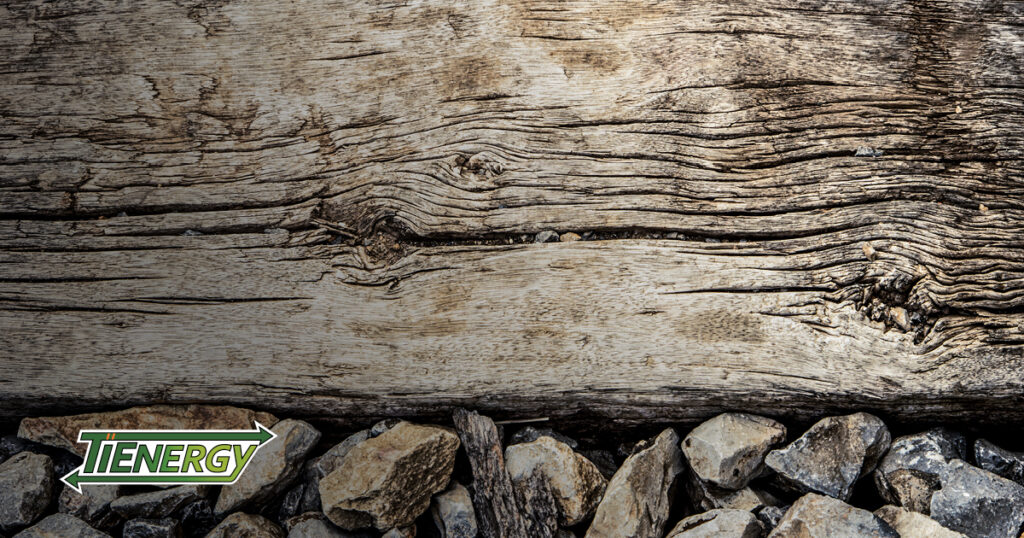Your last bag of groceries contained food items that were delivered via railroad. The humble rail tie helps deliver necessities to Americans all over the country every day, but there are a lot of myths and misunderstandings about this important component of our transportation system. Here’s a deeper look at myths and truths behind railroad ties – including some that may surprise you!
Myth #1: Burning railroad ties is the only disposal solution.
Fact: While burning ties has been a viable solution, with EPA regulations continuously evolving, it’s possible that in the near future, burning ties may not be a long-term solution for the railroads. As a thought leader, TiEnergy has engineered TIEROC as THE long-term solution for expired railroad ties with benefits that far outweigh the traditional method of burning crossties.
Myth #2: Expired railroad ties no longer have a use.
Fact: Millions of old railroad ties take up space in railyards with seemingly no other purpose. TiEnergy provides new life to these expired ties with TIEROC, an engineered aggregate substitute made from post-consumer wood waste, including old ties. Landfills use TIEROC as a roadway material for trucks and equipment, preventing them from getting stuck, causing delivery delays, and operational inefficiencies. TIEROC is sold as a product to landfills where the railroad ties begin their second life. The perfectly engineered TIEROC product has a long-term lifespan when it is applied as an aggregate road base for the landfills. From that point, it continues to break down to produce LFG (Landfill Gas). Modern landfills are sealed capsules that act as “bioreactors”; breaking down materials as much as possible in order to harvest the gas as a renewable energy source for a variety of uses.
Myth #3: The world would be better off without creosote.
Fact: Most railroad ties that are removed from the railroad are approximately 30 years old. The railroad ties that are shredded and ground up to make the TIEROC product have already released the majority of the creosote before they ever leave the tracks where they were originally placed. By producing TIEROC, TiEnergy is making use of what’s left of the creosote within the tie. Creosote, a biodegradable pesticide, aids in a longer life for the tie and by using creosote to extend the life of the crosstie, we can track many benefits.
Without using creosote as a pesticide, we would see a lot more damage to railroad ties through bug infestations, fungi and rotting that can degrade or threaten the integrity of the ties, which would result in an unsafe and unsteady railroad system across the country. Replacing the railroad ties less often results in fewer trees being cut down. Creosote treated wood is a more cost-effective material compared to non-wood products, and until there is a more sustainable solution, it remains the best option.
